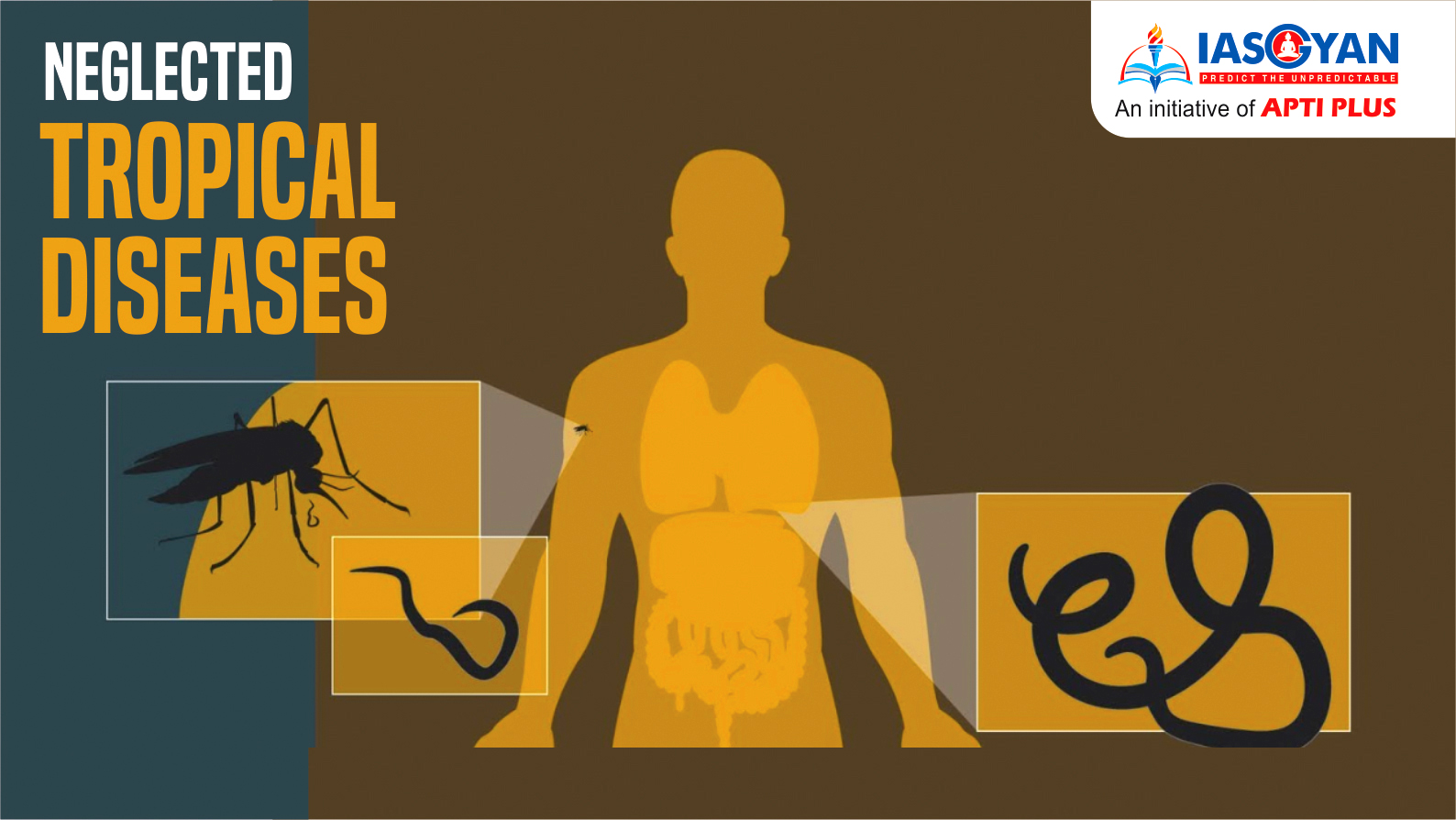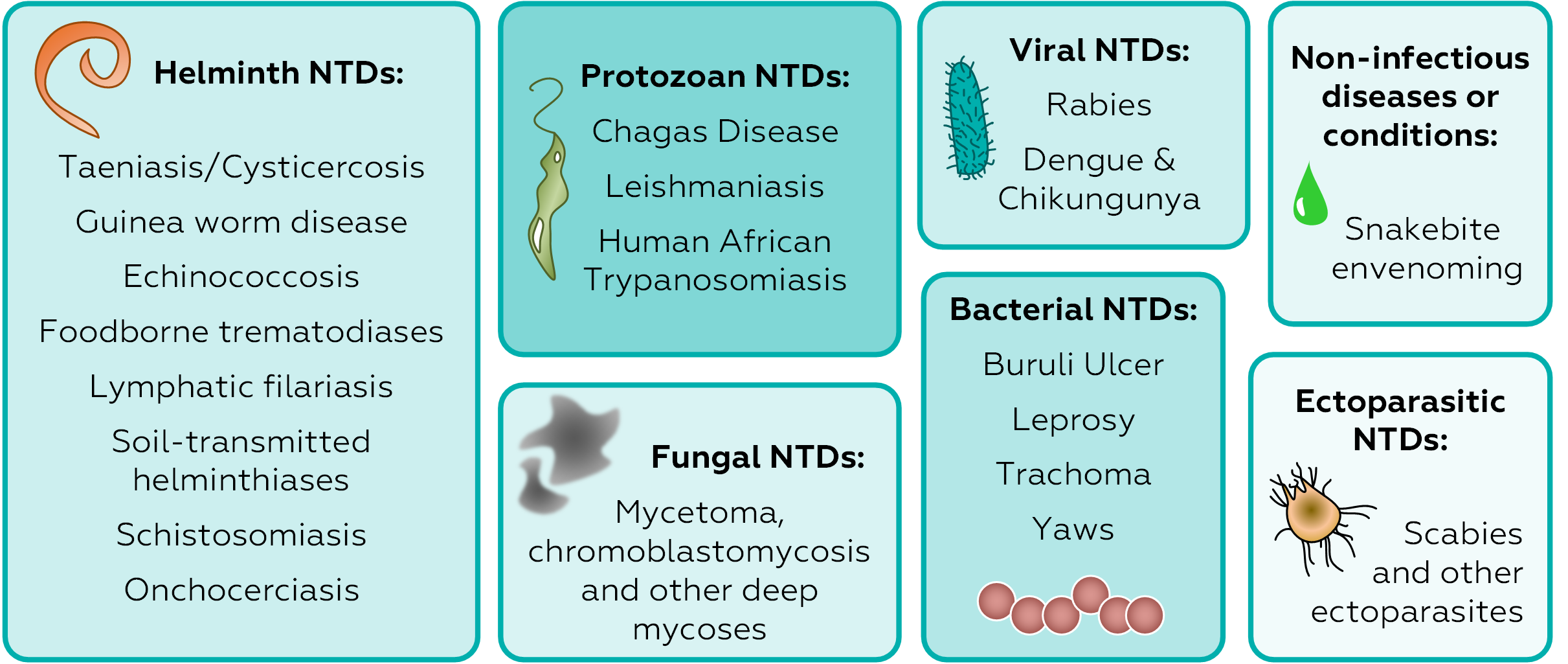




Neglected tropical diseases (NTDs) are a diverse group of tropical infections which are common in low-income populations in developing regions of Africa, Asia, and the Americas. They are caused by a variety of pathogens such as viruses, bacteria, protozoa and parasitic worms (helminths).
WHO has recognized 20 Neglected Tropical Diseases. A summary of each disease is given below:




Forms:




© 2026 iasgyan. All right reserved